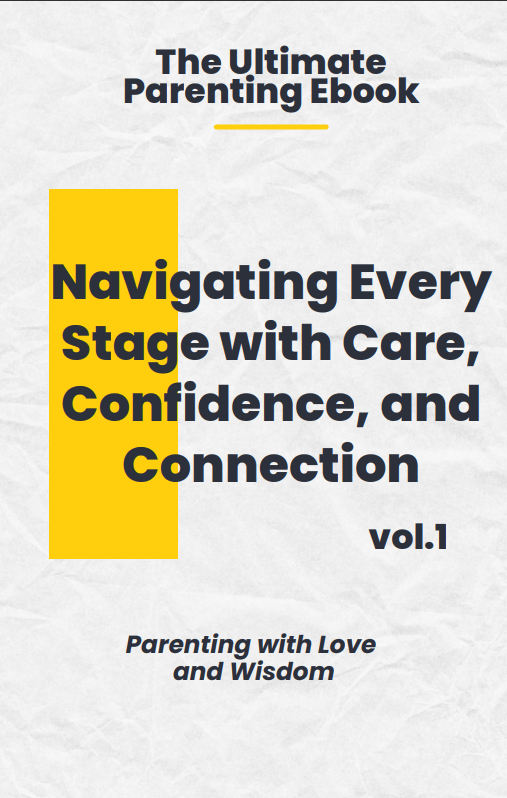If you’re here, I’m guessing you’ve been up for hours trying to soothe a fussy, uncomfortable baby. As a parent, it can be heart-wrenching to watch your baby squirm in discomfort from gas.
Trust me, I’ve been there, pacing the floor with my little one in my arms, desperate for some peace—for both of us. That’s why finding gassy baby relief is essential for your baby’s comfort and your sanity.
Baby gas is extremely common, and while it usually doesn’t signal anything serious, it can cause quite a bit of distress for both baby and parent.
Most babies will outgrow gas pains around 4 to 6 months as their digestive systems mature. The good news? There are plenty of effective ways to relieve your baby’s gas and prevent it in the future. Let’s discuss some practical and research-backed solutions.

In This Blog
ToggleWhat Are the Signs of a Gassy Baby?
Here are the signs that your baby might be gassy:
- Frequent fussiness, especially after feeding
- Arching their back in discomfort
- Clenching their fists tightly
- Pulling their legs up toward their belly
- Bloated or hard belly
- Excessive burping or spitting up
- Passing gas more frequently
- Crying inconsolably for long periods
- Difficulty sleeping or frequent waking up
- Red or strained face while trying to pass gas
- Squirming or wriggling as if trying to find a comfortable position
Recognizing these signs can help you quickly identify if your baby is experiencing gas and apply effective gassy baby relief techniques right away.
Why Do Babies Get Gassy?
Infants often swallow air while feeding, and since their digestive systems are still maturing, this air can get trapped and cause discomfort. Some common reasons include:
- Swallowing air during feeds: Whether your baby is breastfed or formula-fed, they can swallow excess air, especially if they’re latching improperly or drinking from a fast-flow bottle.
- Immature digestive system: Your baby’s digestive tract is still developing, making it harder to process milk or formula smoothly.
- Food sensitivities: For breastfeeding moms, certain foods in your diet might lead to gassiness in your baby.
Understanding the root cause helps you to choose the best methods for gassy baby relief.
9 Gas Relief Tips for Your Baby
Now, let’s get to the part you’ve been waiting for—the actionable tips. These gassy baby relief techniques are tried-and-true and have helped countless parents soothe their little ones.

1. Use Proper Feeding Positions
Holding your baby in an upright position during feedings can reduce the amount of air they swallow. Whether you’re breastfeeding or bottle-feeding, positioning is key to minimizing gas.
- For breastfed babies, try feeding them while sitting upright. This way, gravity helps the milk flow more smoothly and reduces air intake.
- For bottle-fed babies, consider bottles designed to reduce air bubbles. Anti-colic bottles are lifesavers when it comes to reducing swallowed air.
2. Burp Frequently
Burping your baby often, especially during and after feedings, helps release trapped air before it moves into the intestines. Even if your baby seems content after a feeding, it’s always a good idea to try and get a burp out.
Pro tip: If one position isn’t working, try holding your baby upright over your shoulder or sitting them upright on your lap. These positions can make a big difference in gassy baby relief.
3. Tummy Time Helps
Did you know that tummy time isn’t just good for strengthening your baby’s neck muscles? It’s also a great way to help them pass gas! The pressure on their belly helps move gas bubbles along the digestive tract.
Incorporating tummy time into your baby’s daily routine is a simple and effective way to promote gassy baby relief.
4. Gentle Belly Massage
A gentle massage can work wonders for relieving gas. With your baby lying on their back, use your fingers to make slow, clockwise circles on their belly. This can help move gas along and provide comfort. I’ve found this technique incredibly effective in my own experience—it works like magic!
5. Bicycle Legs Exercise
This is another effective way to help your baby pass gas. Lay your baby on their back, and gently move their legs in a cycling motion, like they’re riding a bike. This movement encourages trapped gas to move through their intestines.
Many parents swear by this exercise for gassy baby relief, and it’s an easy, fun way to interact with your baby while helping them feel better.
6. Consider Gas-Relief Drops or Gripe Water
Over-the-counter gas relief drops like simethicone or gripe water can help break up gas bubbles in your baby’s stomach, making it easier for them to pass gas. Be sure to consult your pediatrician before introducing these remedies to ensure they’re safe for your baby.
7. Adjust Your Diet (For Breastfeeding Moms)
If you’re breastfeeding, certain foods in your diet might cause gassiness in your baby. Foods like broccoli, beans, and dairy can sometimes lead to extra gas. Try keeping a food diary to track any patterns between what you eat and your baby’s gassiness.
For some moms, adjusting their diet can make a world of difference in providing gassy baby relief.
8. Switch to Anti-Colic Bottles
If you’re bottle-feeding, switching to anti-colic bottles can significantly reduce the amount of air your baby swallows. These bottles are designed with special vents that prevent air bubbles from forming in the milk or formula.
This simple change can make a huge difference in finding lasting gassy baby relief.
9. Swaddling and Soothing Techniques
Sometimes, the best way to comfort a gassy baby is by swaddling them. Swaddling helps your baby feel secure and can minimize the discomfort of gas. Pair it with gentle rocking or white noise to create a calming environment.
When your baby feels calm, they’ll be able to pass gas more easily, making this a gentle but effective form of gassy baby relief.
When Should You Call the Doctor?
While gas is common and usually nothing to worry about, there are times when it might signal something more serious. If your baby seems to be in extreme pain, refuses to eat, or is vomiting frequently, it’s time to call your pediatrician. It could be something beyond simple gas, like reflux or a food allergy.
Don’t hesitate to reach out for professional help if you feel something is off—your baby’s comfort is the top priority.
Conclusion
As parents, we want nothing more than to see our babies comfortable and happy. Fortunately, there are many ways to provide gassy baby relief, and each baby responds differently to these techniques.
Whether you’re wondering how to get rid of baby gas fast or how to help a newborn with gas, these tips can make a difference.
When do babies outgrow gas pains? It typically happens around 4 to 6 months, but every baby is unique. With a little patience and the right methods, you’ll soon be able to provide your baby with the relief they need—and hopefully, a little more peace and quiet for yourself, too.
If you’ve found a method that works particularly well for your baby, feel free to share your tips in the comments. Let’s help each other navigate the challenges of parenthood together!
You may also be interested in : Newborn Oral Care: Before and After Teeth Erupt – Essential Tips for Parents




